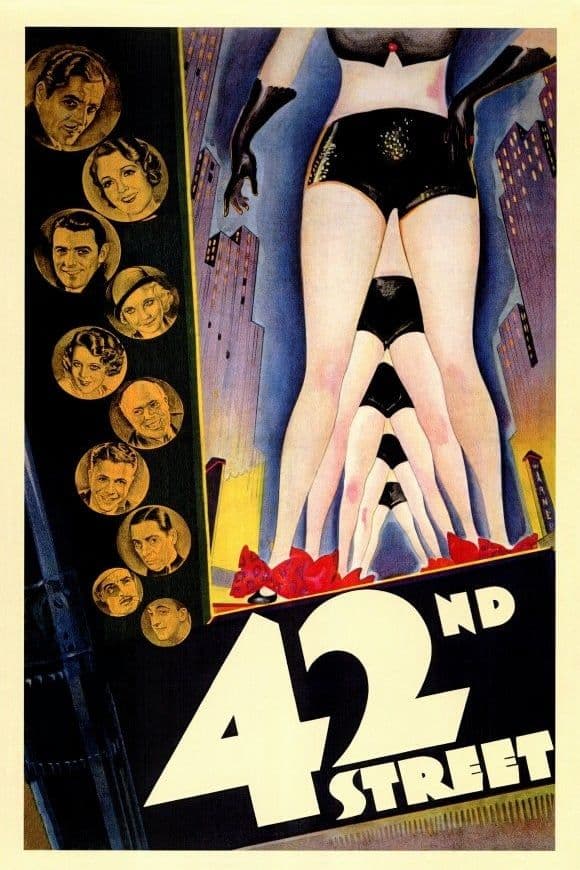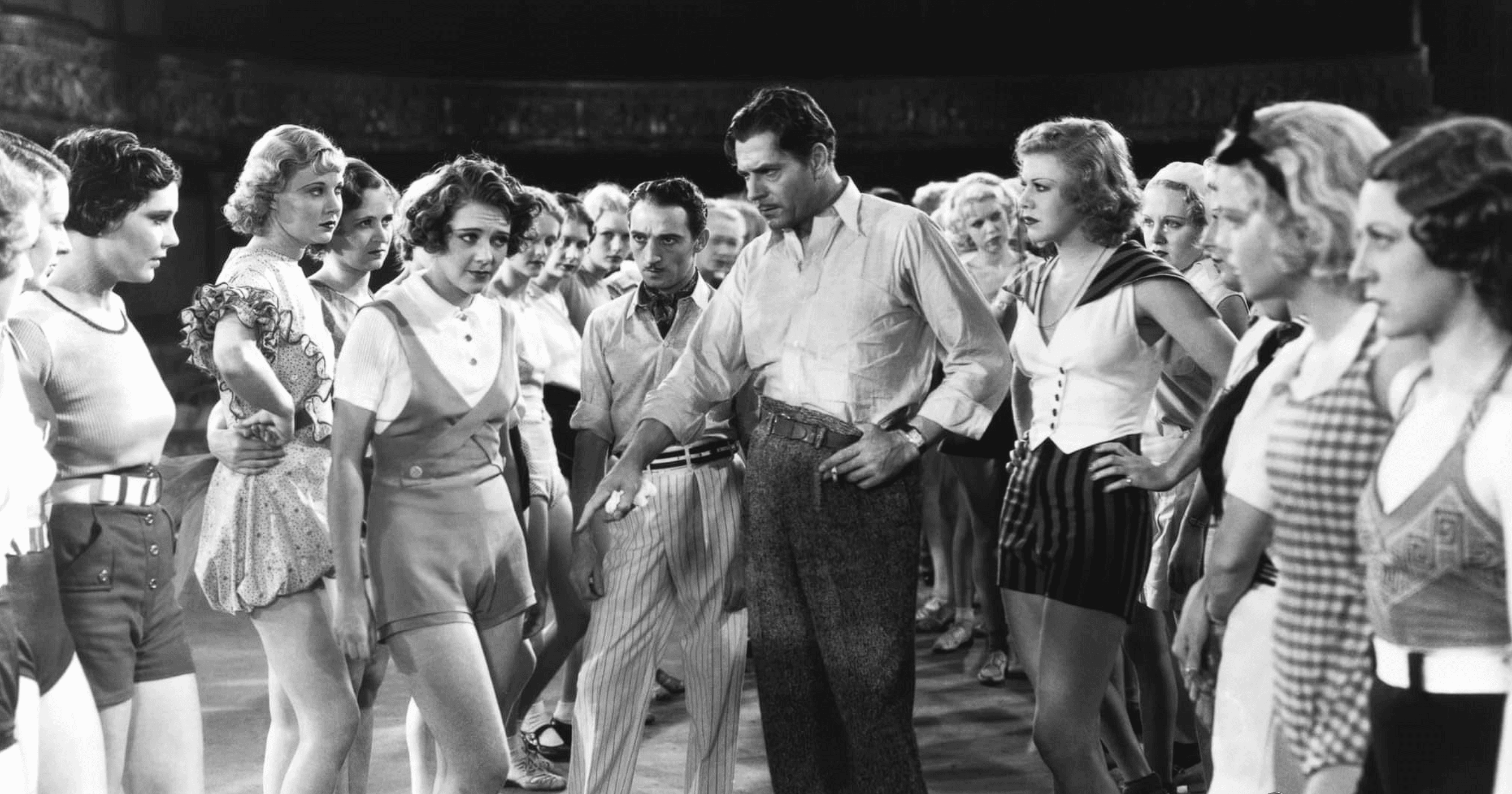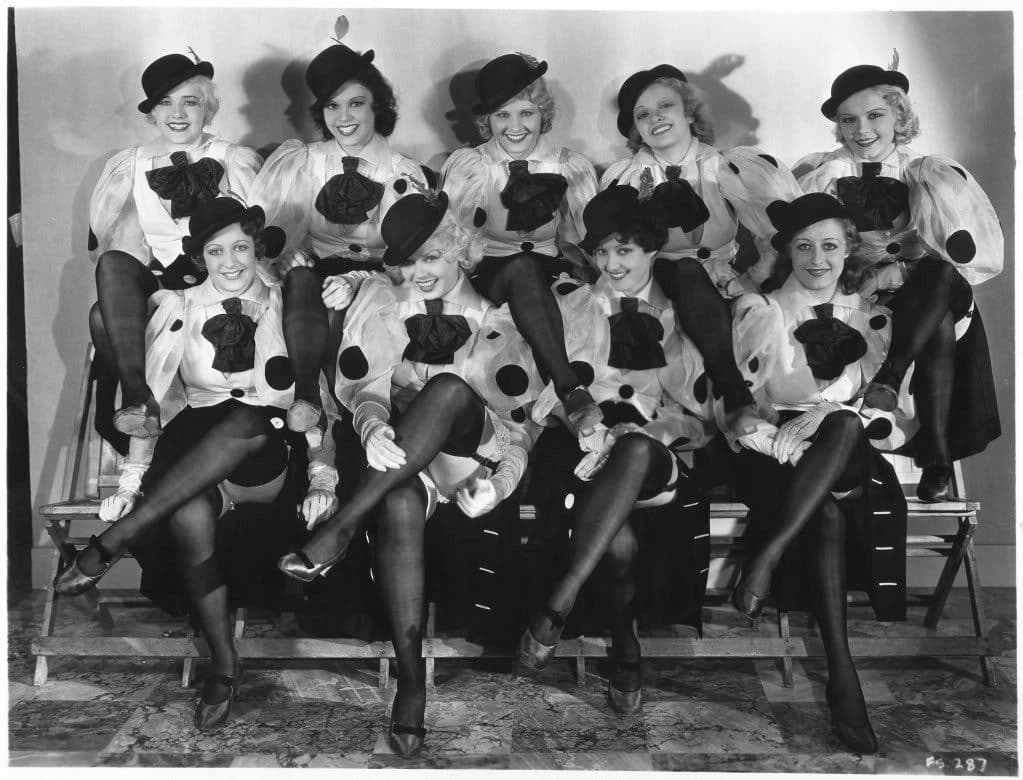
42nd Street
1933
Rate this movie
Average: 0.00 / 5
(0 votes)
Director
The prolific Bacon (with over 130 films to his credit in his career) approaches this project with a solid background. 42nd Street differentiates itself from his previous works, first and foremost by being a musical, and secondly by its refined metacinematic inquiry, centering its narrative on the genesis of a theatrical show told through the cinematic medium. The film, with its contagious energy, spectacular choreographies, and unforgettable music, captures the spirit of the era, offering the audience an escape from the grim reality of the Great Depression. Bacon, with his experience directing films of various genres, demonstrates a great mastery of cinematic language, creating a work that combines spectacle, emotion, and social commentary. 42nd Street is a groundbreaking film, defining the canons of the "backstage" musical and paving the way for the introduction of the musical element as a self-contained entity within cinematic narration, as an unmovable element of a language that conforms to its structure and rhythmic dictate. The almost feverish urgency evident in every frame is not merely a narrative device, but a reflection of an America hungry for dreams and distraction, where the glitter of Broadway became a beacon of hope against the looming shadow of the economic crisis. This cinematic "dream factory," which Warner Bros. masterfully set up, did not merely tell a story, but itself embodied the cathartic and regenerating power of art, an ode to the resilience of the human spirit that refuses to surrender in the face of adversity.
The story, set in the world of Broadway theatre, follows the events involving Julian Marsh, a charismatic but ruthless director who is staging a new musical. The production is fraught with difficulties: financial problems, rivalries among actresses, and finally the injury of the show's star, Dorothy Brock, who sprains an ankle just days before the premiere. Marsh, desperate, decides to entrust the lead role to Peggy Sawyer, a young and talented chorus girl. Peggy, initially insecure, manages to overcome her fears and triumph on stage, winning over the audience and critics. This narrative archetype, the "unknown girl who becomes a star," has imprinted itself on the collective imagination, becoming almost a mantra of the film and theatre industry, a symbol of American opportunity that, even in the darkest times, could still shine. Peggy's journey is not just a personal success, but a metaphor for collective recovery, for the ability to reinvent oneself and find one's place in the spotlight.
Bacon, with a compelling narrative rhythm, brilliantly stages the behind-the-scenes of a Broadway show, with its tensions, ambitions, and dreams. But it is in the brilliant choreographic vision of Busby Berkeley that the film reaches unparalleled heights of visual ecstasy. His are not mere choreographies, but true geometric, kaleidoscopic symphonies, transcending the stage to explore the unlimited possibilities of the cinematic medium. His cameras moved like brushes on an immense canvas, creating human patterns that seemed designed by a divine architect, transforming rows of dancers into blooming flowers, into abstract motifs of an almost psychedelic beauty. The use of aerial shots and unusual perspectives, the zooms on performers' faces that fade and reappear, radically break the fourth wall, bringing the viewer not just onto the stage, but inside the performance itself, in a vortex of movement and form that anticipated the aesthetics of music videos by decades. These audacious and luxuriant sequences were the perfect antidote to the grim reality of the Depression, an orgy of colors and symmetries that made one momentarily forget the breadlines and widespread misery.
In synergy with the unforgettable music, composed by Harry Warren and Al Dubin, and with the brilliant performances by Warner Baxter, Ruby Keeler, and Ginger Rogers, the choreographies helped create a classic that continues to enchant audiences of all ages today. Music, more than anything else, is, as mentioned, the film's core element: songs like "Young and Healthy" and "You're Getting to Be a Habit with Me" unequivocally express the complex interplay of attraction between the protagonists, while "Shuffle Off to Buffalo" celebrates love and the seal of marriage, with a lightness and mischief that capture the essence of the era. In 42nd Street, music transcends its function as mere accompaniment to become a true semiotic element, a language with its own grammar and syntax, capable of conveying meanings and contributing to the construction of the film's overall meaning. The musical numbers are not interruptions, but dramatic extensions, emotional sublimations of the unspoken, an expression of the characters' subconscious that translates into a Dionysian fervor of song and dance. Lloyd Bacon, with his artistic sensibility and innovative vision, masterfully utilized music in an original and creative way, integrating it perfectly with the narrative and choreographies and ultimately elevating it to the protagonist of the work, an expressive language that enters into symbiosis with and completes the narration.
The result is a work that, while intrinsically linked to its historical context, exudes surprising timelessness. The "show must go on," Julian Marsh's mantra, is not just a line, but the driving philosophy of an entire industry and, by extension, of a nation on its knees. 42nd Street does not merely celebrate the glamour of Broadway; it also reveals its shadows, the incessant toil, the cruelty of the backstage world, all while enveloping everything in an aura of contagious optimism. This balance between raw realism and sublime musical fantasy has guaranteed the film a prominent position not only in the history of the musical, but in cinema tout court. Masterpieces such as Vincente Minnelli's Babes on Broadway (1942) or Gene Kelly and Stanley Donen's Singin' in the Rain (1952) would not have existed, or would not have had the same resonance, without the pathbreaking direction laid out by this film, a true Rosetta Stone for the language of the cinematic musical. Its influence is evident in every musical that subsequently explored the theme of "making a show," elevating the backstage to a stage and the dream to tangible reality.
Country
Gallery





Comments
Loading comments...